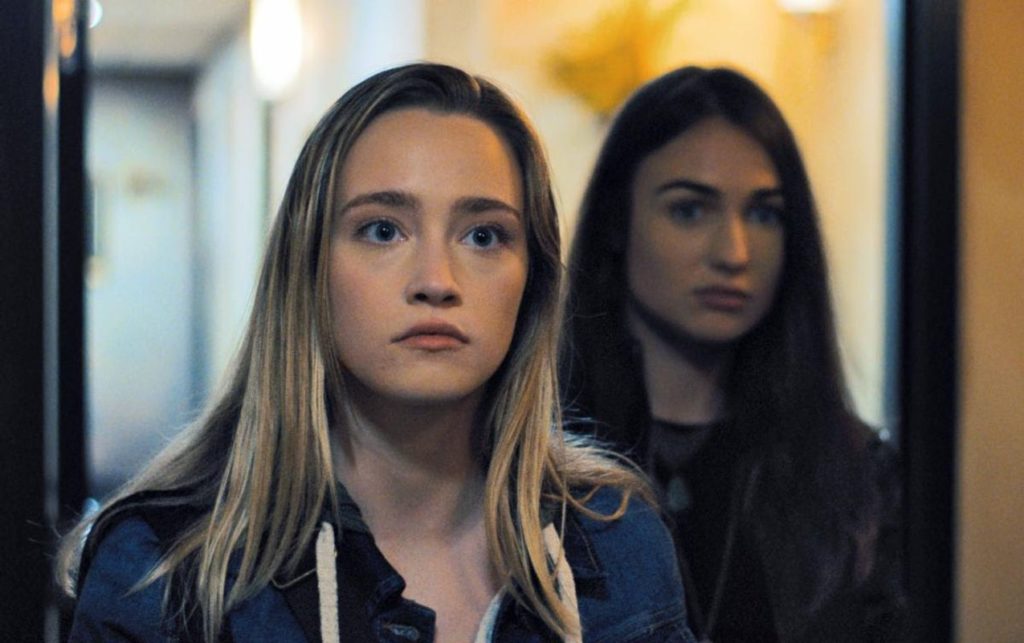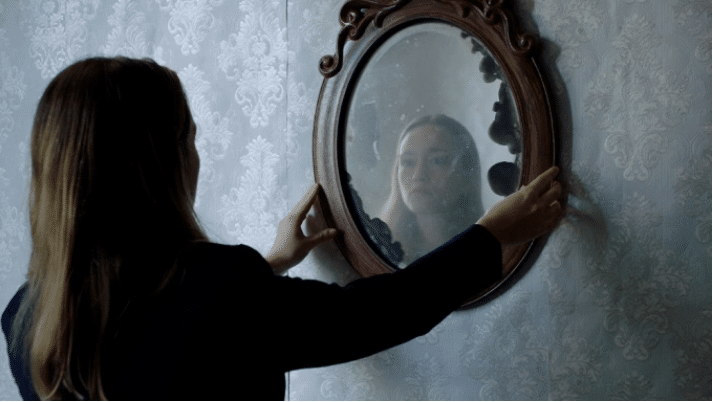
Based on a Japanese novel, partly produced by a Japanese team, you’d be forgiven for expecting Room 203 to contain a fair amount of J-horror elements – but that’s not how it primarily comes across. It’s far more rooted in the Western tradition of haunted houses, though it balances its use of tropes with its other aspirations altogether. It’s a film more interested in relationship-building than generic scares, though perhaps leaning rather heavily on the former; for the most part, the supernatural aspects here are kept rather low key.
The opening scenes say anything but that, however: Room 203 feels like it starts already at ten minutes in, with a very quick glimpse at some sepia-page occult goings-on before cutting straight to a young man refurbishing an apartment – yep, it’s Room 203. As he works, he catches his hand on something in a hole in the wall, dislodging a necklace that had been stashed in there. When his girlfriend arrives to see his progress, he gives her the found necklace; presumably neither of them can hear the significant, ominous sighs emanating from it which we can hear, else things wouldn’t have gone South quite so fast for her. You’d be forgiven for thinking that the film hoped to sell itself solely on the vivid calling card of its opening few minutes, but be assured: things slow down a lot at this point, the point where the opening credits actually roll.
We meet the next incoming tenants of the apartment: Kim (Francesca Xuereb), who is flying the nest to start her life at college, living with old friend Izzy (Viktoria Vinyarska), much to the chagrin of Kim’s parents. The girls’ giggly house move is cut a little short by their first encounter with the landlord Ronan (Scott Gremillion), but they like the ‘vintage vibes’ of the place, and decide to definitely take it. Renters/former renters be warned: the first horror here is that Kim hands over a substantial amount of money to the landlord without requesting a receipt. Uh-oh.
It gets worse; not rapidly worse, but worse. The hole in the wall/necklace soon reappear, and as life goes on for both girls (starting college, nights out, auditions, love interests) glimpsed shadows, nightmares and odd aromas weave their way into their lives. As with most cinema of this kind there’s a mystery to unpick: Kim and her new beau Ian (Eric Wiegand), both budding journalists, get cracking, turning up some unexpected and interesting, if not always explicable plot elements.
The film settles into a very slow burn mode. It’s as much about two damaged people and their friendship as it is anything else, with the supernatural aspects in the plot drawing off these damaged people, waiting for a suitable weakness in one or both of them. Xuereb, as Kim, turns in a good performance here, particularly given that she is frequently seen reacting to her own misgivings and dreams and isn’t necessarily being propped up by ghosts, demons or similar. She also dominates the screen time too, doing a decent turn throughout. Vinyarska warms up a bit more slowly, but then this is pretty much in keeping with her character. However, this shift in focus to the back stories of both girls does get baggy in places. The film is never exactly a conventional ghost story anyway, remaining quite conservative in what it actually shows to us. The crashing incidental music, when it does veer into more supernatural fare, feels like it belongs elsewhere – even when the jump scares start to appear, and appear they do.
Room 203 is a curiosity in a few ways, though not one which lacks ambition. Human dramas will overshadow the horror to too great an extent for some viewers, and the lack of a neat conclusion has its frustrations, though its big, mythological twist helps to distinguish it and it’s certainly a well-made, often thoughtful, muted take on the genre.
Room 203 receives a limited theatrical run, as well as getting a VOD release, on April 15th 2022.
